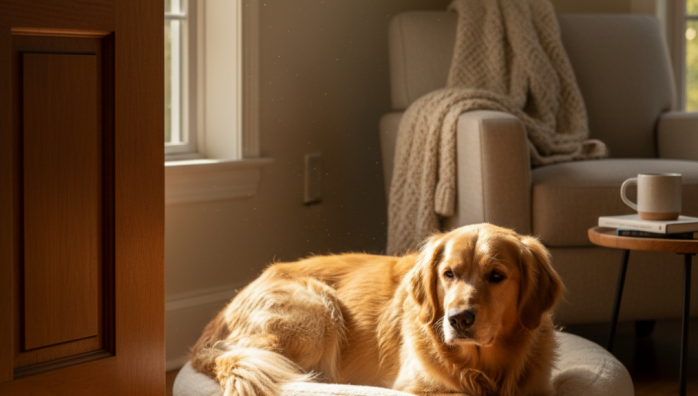Gradual Departures Training for Anxious Pets
by admin in Pet Care Basics 20 - Last Update November 18, 2025

When I first transitioned to full-time remote work, I honestly thought it was the best thing that could have happened for my dog, Leo. I imagined a world with no more long, lonely days for him. The irony hit me hard a few months later when a simple trip to the grocery store resulted in a panicked, whining pup and a scratched-up door. I learned a tough lesson: being home all the time doesn\'t automatically cure separation anxiety; in some cases, it can make it even more intense.
Why constant presence can be a double-edged sword
It took me a while to connect the dots. By being there 24/7, I had inadvertently created an even stronger dependency. My presence was the new normal, so my absence became a massive, terrifying event. He no longer had a predictable routine of me leaving for work and coming home. Instead, any departure was unexpected and alarming. That realization was my \'aha\' moment. I wasn\'t just managing his old anxiety; I was dealing with a new, super-charged version of it, and I knew I had to find a gentle, effective way to help him feel safe on his own again.
My step-by-step guide to gradual departures
After a lot of reading and some trial and error, I landed on a method focused on gradual desensitization. It’s all about teaching your pet that departures aren\'t a big deal and that you will always come back. It takes patience, but the peace of mind it creates for both of you is priceless.
Step 1: Make your departure cues meaningless
I started by noticing all the little things I did before leaving: picking up my keys, putting on my shoes, grabbing my jacket. For Leo, these were all giant red flags signaling abandonment. So, I started doing them randomly throughout the day... and then not leaving. I\'d jingle my keys and then sit back down on the couch. I\'d put my shoes on and walk to the kitchen for a glass of water. After a few days, he stopped paying so much attention to them.
Step 2: The 30-second \'non-event\'
Once the cues were less scary, I started the actual departures. I\'d walk to the door, step outside, close it, and immediately come back in. I\'m talking 30 seconds, max. The crucial part for me was my attitude. I didn\'t say a dramatic goodbye or have a big, excited reunion. I acted like I\'d just gone to get the mail. This calm energy showed him it was a total non-event.
Step 3: Slowly, slowly build up the duration
This is where patience is everything. Once he was calm with 30 seconds, I moved to a minute. Then two minutes. Then five. I only increased the time when he was consistently relaxed at the current duration. If he ever showed signs of stress, I\'d take it as a sign I was moving too fast and would drop back to the previous, successful time for a few more sessions. It’s a dance, two steps forward, one step back.
Step 4: Create a positive \'alone time\' experience
I wanted him to associate my leaving with something good, not just the absence of me. I saved his absolute favorite enrichment toy—a puzzle feeder filled with something extra tasty—exclusively for when I was practicing my departures. He only got this special treat when he was going to be alone. It helped shift his mindset from \'Oh no, she\'s leaving\' to \'Oh boy, I get my special toy!\'
What I learned from my mistakes
Believe me, I wasn\'t perfect. My biggest mistake early on was getting too excited and trying to jump from 5 minutes to 30 minutes. It backfired and we had to start over from the shorter durations. I also had to train myself not to make a huge fuss when I got home. A calm, gentle greeting is much more reassuring than a high-energy, emotional reunion. Remember, you\'re building confidence, not drama. This process is a marathon, not a sprint, but seeing your pet resting peacefully when you\'re gone is the best reward. Of course, this is what worked for my dog and me; for severe cases, I always recommend chatting with a certified animal behaviorist or your veterinarian to rule out any underlying issues.










